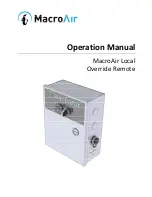
Insulation of ducts in heated spaces
Supply and extract ducts
In warm loft spaces the supply and extract channels must
be insulated with 50 mm insulation.
Supply and extract ducts led through heated spaces in
dwellings do not require insulation.
Fresh air and exhaust ducts
In warm loft spaces and heated rooms in dwellings the
fresh air and escaping ducts must be insulated with
minimum 50 mm insulation. In addition the insulation must
be covered externally with plastic film or aluminium foil in
order to avoid condensate in the insulation.
Reheating of the supply air
As the countercurrent heat exchanger cannot recuperate al
the heat from the extract air to the supply air, the supply air
will be 1°-5° C colder than the room temperature. If this is
not tolerable it is possible to mount a water or electric
reheater, that heats the air up to the room temperature.
Water reheater
As the counter current heat exchanger cannot extract all
the heat from the extract air and supply it to the supply air,
the supply air will be about 1-4°C colder than the room
temperature in the dwelling for the whole winter season. If
this lower supply temperature is insupportable during cold
periods, a water-based or electrical reheating surface can
be mounted for reheating the supply air up to room
temperature.
Water-based reheating surface
To protect the water-based reheating surface from frost
burst, a frost protection thermostat must be fitted to the
unit and the surface insulated. The frost protection
thermostat sensor is mounted behind the fins of the water-
based reheating surface. The sensor for controlling the
motor valve is mounted in the supply air channels approx.
500 mm downstream of the water-based reheating surface
in order not to be affected by the radiant heat from the
heating element. The water supply to the water-based
reheating surface must be executed by an authorised
plumbing and heating engineer.
Electrical reheating surface
The sensor for controlling the electrical heating surface is
mounted in the supply air channel approx. 500 mm
downstream of the electrical reheating surface in order not
to be affected by the radiant heat from the heating
element.
Electrical preheater
At outdoor temperatures below 0 °C it is recommended to
install an electrical preheater to prevent the counterflow
heatexchanger from ice building. The sensor for controlling
the electrical preheater needs to be installed in the fresh
air duct 500 mm. upstream of the electrical preheater.
Note – when using the modulating preheater, the existing
fresh air temperature sensor in the ventilation unit can be
used to control the preheater (no extra temperature sensor
is required).
Heating coil – power/flow/temp graph
7






































